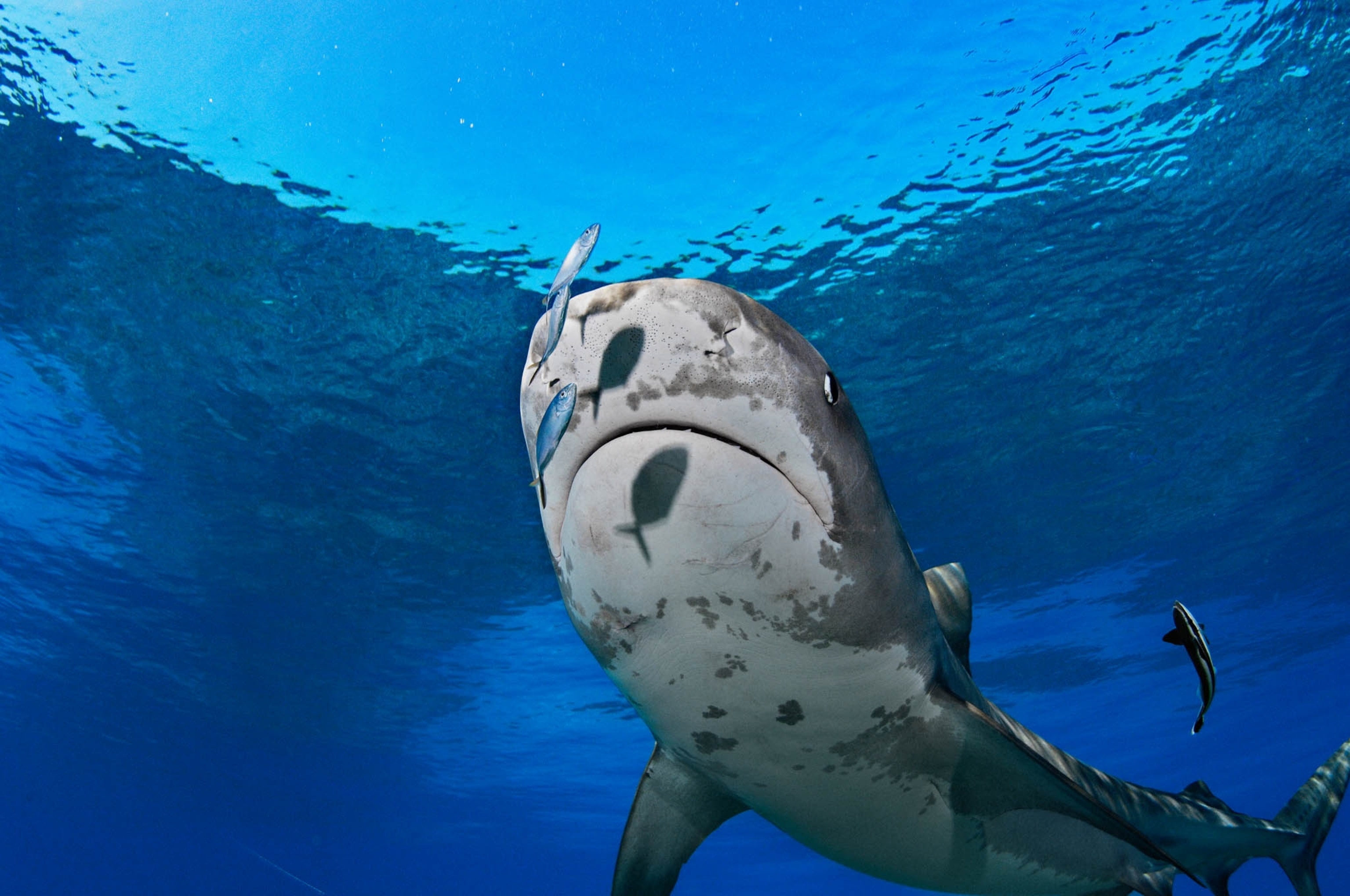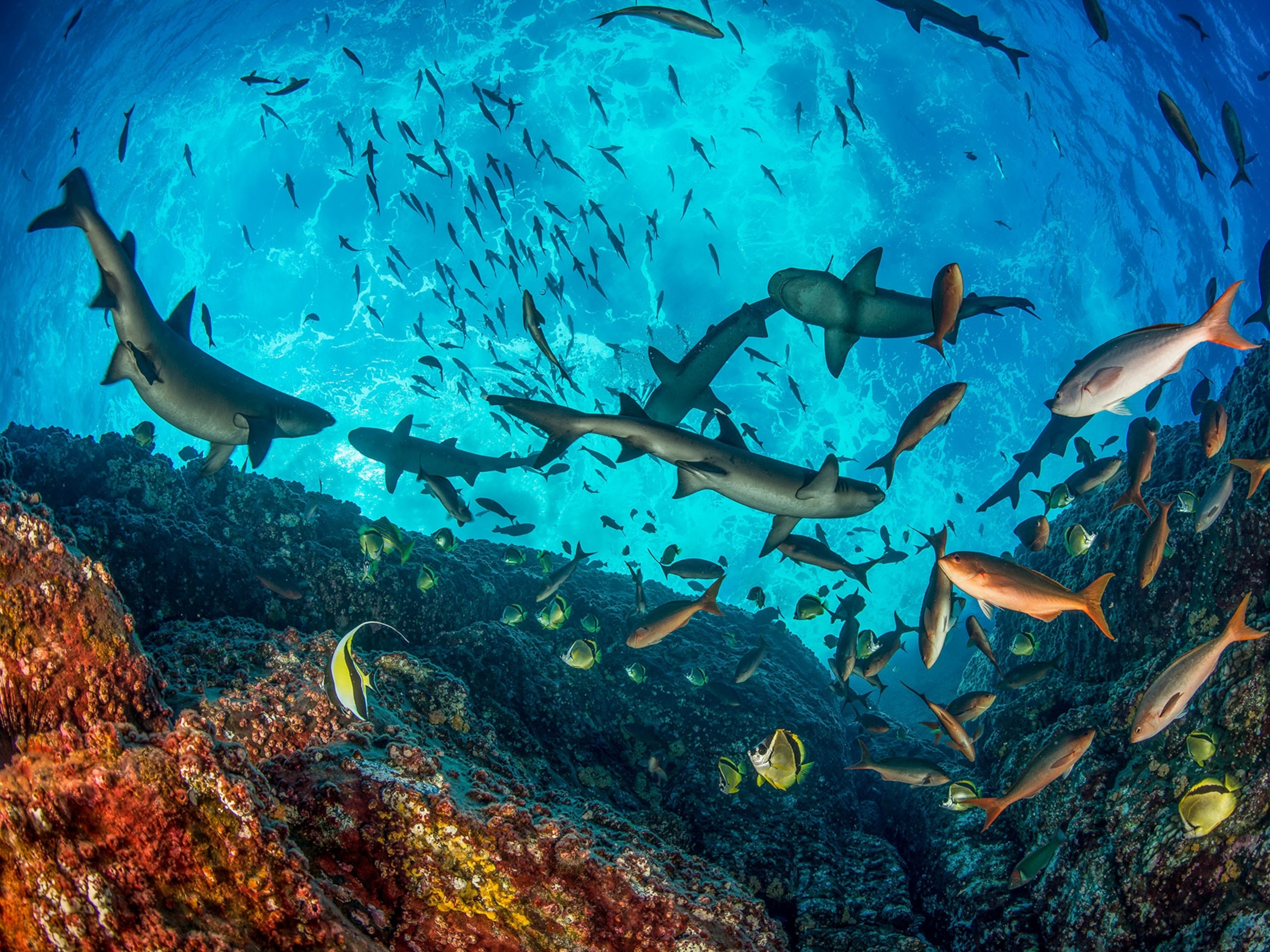
Shark Attack Risk Is Down Sharply Since 1950
New study highlights real factors behind rise in reported attacks and offers safety tips.
Although the overall number of reported shark attacks around the world has gone up, a person’s individual risk of being bitten by a shark has plummeted, according to a new study.
Researchers from Stanford University found that the chance a person in California who goes into the ocean will be bitten by a great white shark fell 91 percent from 1950 to 2013.
The Stanford team compared shark bite records with data on human use of the ocean in California, and calculated that an ocean swimmer there in 2013 had only a one in 738 million chance of being bitten by a great white. Surfers, the most likely to be bitten, had a one in 17 million chance. Scuba divers had a one in 136 million chance.
That means ocean-goers are almost 7,000 times more likely to be hospitalized for decompression sickness (the bends) and 1,800 times more likely to drown than they are to suffer a shark bite. (Learn about New Jersey’s famous shark attacks that changed the world.)
So why the increase in reported shark bites? Because more people are going in the water. Since 1950, the human population in coastal California has tripled, from 7 million inhabitants to 21 million. And there are hundreds of thousands more surfers, swimmers, and scuba divers. (See great whites surrounding paddleboarders.)
“We have recently seen an increase in shark attacks in some areas, like North Carolina and Western Australia, but you need to weigh that with the number of people going into the ocean and the intensity of that use,” says Francesco Ferretti, a scientist at Stanford’s Hopkins Marine Station who co-led the study published Thursday in the journal Frontiers in Ecology and the Environment.
See more pictures of sharks:
The study's results "seem consistent with what I have seen in terms of shark attacks on a worldwide basis," says George H. Burgess, the director of the International Shark Attack File at the Florida Museum of Natural History.
Burgess, who was not involved with the new study, says it's difficult to estimate how much time people actually spend in the water but he says analysis in other places also suggests "people are less likely to be bitten on an individual basis because there are so many more people in the water."
Are There Also More Sharks?
It’s true great whites and other sharks have enjoyed recent protections in North America, and their numbers may be recovering somewhat after years of overfishing. But Ferretti says the modest recovery has been dwarfed by the rise in the number of people in the water.
Around the world, sharks are being killed to the tune of an estimated 100 million a year and many species are endangered. And killing sharks in order to decrease bites “is very expensive and doesn’t make people any safer,” he notes. “Most of the time such culls don't kill the sharks that actually pose a danger for people.” Instead, they kill a lot of other sharks, which are highly migratory.
A better strategy is to encourage safer use of the water, such as avoiding swimming with open wounds or silver objects (which can attract sharks), avoiding dark or turbulent water, staying away from seal colonies, staying close to shore, and paying attention to the seasons. In California, most shark bites happen in October and November, when the predatory fish are cruising the coast for prey. (Get more shark safety tips.)
By using common sense people can enjoy the water and avoid dangerous encounters with sharks, says Ferretti, who adds, “live sharks are very important for the functioning of the ocean.” They keep other species in check and thin out sick and diseased animals.















